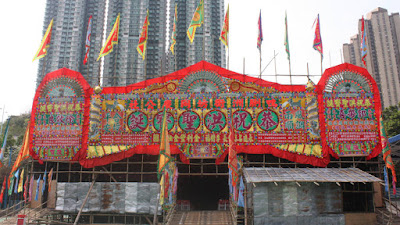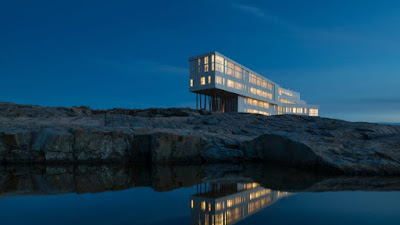How to build a bamboo theater in Hong Kong
Every year for just a few weeks, a towering bamboo theater rises from Ap Lei Chau, one of the world's most densely populated islands.
As many as 1,000 people will pack the 81-feet-wide, 130-feet-long, and 45-feet-high bamboo behemoth in southern Hong Kong, where a Cantonese opera is staged to celebrate the birthday of Hung Shing, the god of the southern sea -- still a revered figure on this former fishing isle.
This is one of about 40 bamboo theaters erected around Hong Kong throughout the year to host performances honoring various Chinese gods.
But their construction is something of a mystery. A bamboo theater has no written blueprint. Workers say they build them based on instinct, rapport and experience -- they learn their trade on the job during apprenticeships.
Today, less than 100 people in Hong Kong specialize in the craft, says Chan Yuk-kwong, owner of Wah Bo Engineering, which executed the Ap Lei Chau project in 2018 -- and has done so each year for the past three decades. But with a lack of young people wanting to join the industry, Chan believes there "will only be fewer companies making bamboo theaters" in the future.
Bamboo city
While Cantonese opera originated in the 1500s in China, during the Ming Dynasty, bamboo theaters in Hong Kong can be traced back to the 1800s when they were erected for pop-up "street shows" during the early British colonial era.
Today, bamboo structures can be seen all over Hong Kong, where it is estimated that more than five million rods are used by the construction industry each year. Metal scaffolding in this Chinese city is a rare sight.
The men -- and it always is men -- who nimbly scale these vertiginous bamboo grids, often without safety harnesses, are considered by many as much artisans as they are construction workers. Erecting a bamboo theater is perhaps the best example of this craftsmanship.
"It's like doing artwork ... so much of it is unplanned, and I think that's where the beauty of (bamboo construction) lies," says says architect William Lim, who has built around a dozen major bamboo installations, and is founder of Hong Kong-based firm CL3. "It has a lot to do with spontaneous discussion and reaction."
Chan, who is in his 60s, started learning how to build with bamboo at 13 years old. His great-grandfather, who lived in in Guangdong, southern China, specialized in bamboo construction and passed the craft down: most of the men in Chan's family, including his own son, went into the field.
Today, Chan's company builds about 30 bamboo theaters per year -- the lion's share of what remains in Hong Kong. In Ap Lei Chau, he led a rotating team of 10 workers over two-and-a-half weeks, and says the weather was the biggest variable. "If it rains, we stop," he explains.
He declined to say how much the Ap Lei Chau theater cost to build.
The foundation
Chan says he has built bamboo theaters in locations as precarious as cliff edges and steep hills, because they have to be located near the temple of the god they will honor. "It's exactly the same as building on flat ground. You just become a lot more careful," Chan explains. "If it's going to be slippery ground then you need to add extra pillars to prevent it from moving."
Luckily, the Ap Lei Chau theater was built on a public soccer pitch, near the Hung Shing temple, which provided a straightforward flat surface.
First off, Chan had to find a way to secure the free-standing theater without building any foundations or using a single nail. To achieve this, his team identified an existing structure at the site onto which a few wooden poles, which are larger and more stable than bamboo, could be attached.
"Traditionally, a bamboo structure has to get its strength from something around it," says Lim. Take, for example, the pockets of bamboo scaffolding protruding from a single apartment when a repair or paint job is needed in the middle of a tall tower. "The strength of the building will allow the bamboo to support itself very nicely against it," says Lim.
The same principle applies when building a bamboo theater. "The (bamboo) structure is anchored to surrounding permanent structures -- so it borrows its strength from the environment," Lim explains. "I think it's a very unusual way of construction, and I've only seen it done in Hong Kong."
Taking shape
The team built one entire side of the theater before fleshing out the structure into a box shape. It doesn't matter which wall comes first, Chan says: some workers prefer going from left to right, while others back to front.
Once the bamboo structure had its basic shape -- i.e. there were four walls, and a triangular rooftop mirroring those seen in traditional Chinese architecture -- the wooden poles were removed.



